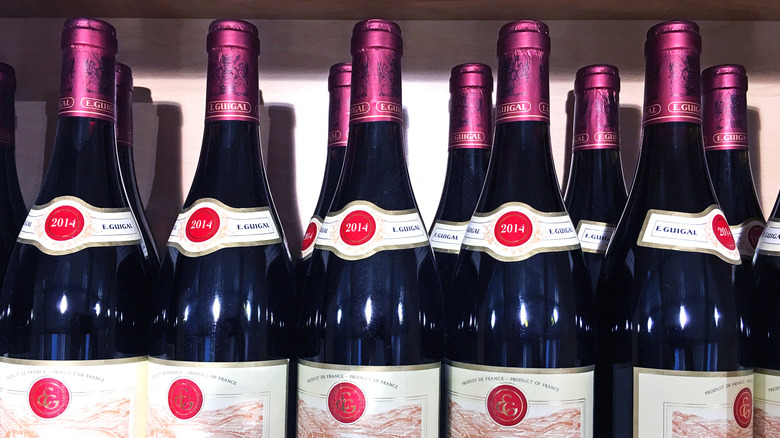Why Your Wine Bottle Has A Foil Wrapper Around The Cork
We may receive a commission on purchases made from links.
When you go to the store for a bottle of wine, you'll likely notice a metallic or plastic wrapper on top of the bottle. This covering, known as a capsule in wine parlance, was first created by André Georges Dupré in 1833. Its original purpose was to protect the cork from pests like cork moths or rats, as well as mold. Today, capsules are often more decorative than functional, though they do help prevent dust from settling on the cork and provide a way to distinguish bottles stored horizontally. One style of wine that has continued to use capsules, partly out of tradition, is Champagne. Historically, the wrapper, called a coiffe, served a practical role: concealing the often-inconsistent fill levels of bubbly in each bottle caused by the manual bottling processes used in the early days of Champagne production.
In recent years, there has been a growing movement among winemakers toward naked corks. By abandoning the capsule, the bottle's cork is left fully exposed. This results in a more relaxed presentation, and supports eco-conscious and cost-friendly production. Other brands have forgone both capsule and cork altogether, opting to close wine bottles with screw caps instead. While some wine purists argue that screw caps are indicative of cheap wines, even some premium brands have adopted them for their practicality: there is no risk of a damaged cork, and the bottle is easily resealable.
How to remove a foil capsule like a pro
Plenty of wine openers feature a basic wing corkscrew with "arms," but they don't always have a foil cutter, which means you'll need a second piece of equipment. Foil cutters fit snugly over the top of the bottle and can be twisted to quickly remove the top of the capsule. However, foil cutters don't cut below the lip, so there is a greater risk of contamination, as well as the possibility of the foil becoming an obstacle to a smooth pour. Neither of these issues will matter if your wine has a naked cork.
If you do have a bottle with a foil capsule, though, the most efficient — and elegant — way to remove it is to use what is often referred to as a sommelier corkscrew, which has a fold-out knife, as well as a corkscrew and bottle opener (we like this one by HiCoup Kitchenware). First, place the knife just under the lip of the bottle and carefully cut around the foil. This exposes the cork for easy removal and also keeps the outside of the foil from touching, and possibly contaminating, the wine. Once you've removed the foil, you can use the corkscrew to extract the cork like a pro. And if there's no corkscrew in sight, it's even possible to open a wine bottle with a knife and fork!


